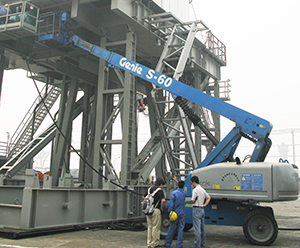
The equipment rental business is growing in an unlikely global market: China. Softening construction demand is forcing Chinese construction firms to gradually shed their traditional preference for owning equipment.
Similar trends have been in the works in the United States and other countries in recent years. “Contractors disposed of a lot of equipment during the recession and now, rather than buying new machines, are using rental equipment because of short-term needs, tight budgets and the lack of longer-term projects,” says Chuck Yengst, an equipment market analyst in Wilton, Conn.
In the U.S., Yengst sees 8% growth in rental revenue this year and another 8% in 2015. After 2015, the market is expected to continue to grow moderately, with a limited, cyclical change by 2018. “Contractors are back to buying used equipment when they see good deals, but buying new machines has not returned yet,” he explains.
The situation has been almost the opposite in China, which is regarded as the largest construction market in the world. Construction companies, most of whom are state-owned, rarely have used rented equipment, except in the case of some aerial work platforms, though few have yet replaced old-time scaffolding.
Room To Grow
The Chinese rental industry is far from mature. Experts estimate that some 200,000 pieces of equipment are on rent in the U.S., while 100,000 are on rent in Japan and just 20,000 in China. The main growth area for China’s rental industry is aerial platforms, expected to grow rapidly as scaffolds are reduced under pressure from safety inspectors and the rising cost of labor.
The situation may be changing. Recent conversations here with executives of Hertz Equipment Rental Corp., Terex Corp. and Skyjack reveal a high sense of optimism about a significant growth in demand for rental equipment in the Chinese market.
“State-owned construction companies are going to focus on return on capital. We see government companies opening up to rental. This would not happen three years back,” says Brad Patton, Hertz’s general manager for China.
Two other factors driving up the demand for rentals are the rising cost of labor and the government’s keenness to ensure safety on construction sites, which will translate into wider acceptance of aerials, says Ken Lousberg, Terex’s chief in China.
“We are not at the tipping point for acceptance of aerial work platforms, but we are not far from it,” he says. “There is huge potential in China because the use of aerials is about one-tenth of what you see in Brazil or in North America,” he said. Nearly 70% of Terex's production in China is now being picked up by the rental industry, which is a dramatic rise from the situation five years back.
Even super-high-reach aerials are entering the Chinese market. JLG just sold its 1850SJ Ultra Boom lift, a machine with a working reach of 19 stories, to Shanghai Horizon Equipment & Engineering Co.

Post a comment to this article
Report Abusive Comment